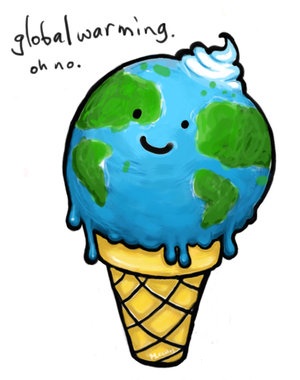Global warming may or may not be a problem. Man may or may not be driving it. Given the uncertainties, a significant amount of global regret may apply if we divert too much of our global wealth to solving what may be a non-existent or trivial problem, especially if that diversion mires billions in poverty. On the other hand, we may also regret not doing anything if man-made global warming does turn out to be a problem. It is therefore prudent to examine what steps we can take that would prove beneficial whether or not anthropogenic global warming turns out to be a problem. These steps can be termed “no regrets” policies.
What makes a No Regrets Global Warming Policy? A global warming policy can be termed “no regrets” as long as it:
- Reduces the amount of greenhouse gases emitted into the atmosphere, or
- Mitigates, prevents or reduces a harm associated with global warming, or
- Provides greater capacity for dealing with problems associated with global warming
- Without imposing significant cost or diverting economic activity.
Top Five “No Regrets” Policies
1.) Eliminate all subsidies to fuel use.
Subsidies to energy R&D cost taxpayers millions of dollars while producing minimal benefits. While these programs may be relatively small given the size of domestic energy markets, they serve little, if any, useful purpose while subsidizing large corporations at taxpayer expense. The potential threat of global warming, whether it is real or not, is simply one more reason to eliminate these subsidy programs. An international agreement aimed at ending energy subsidy with binding targets would be a significant victory for emissions reduction. Unlike Kyoto, which forces an energy starvation diet on its participants, such a treaty would be a move to combat energy obesity.
2.) Repeal the Federal Flood Insurance Program.
Much of the concern over global warming’s potential for harm in the US relates to sea level rise and the flooding that will result. However, much of the investment in potentially vulnerable areas is a result of the Federal flood Insurance Program. This program encourages building in vulnerable areas by acting as a moral hazard: people take greater risks because the government has said it will help bear that risk. Reform would reduce the moral hazard connected with building on vulnerable land, transferring the risk from the taxpayer to the private sector, which is likely to take a more realistic view of the issue.
3.) Reform Air Traffic Control Systems.
Greater demand for air travel means more flights, which means greater fuel use and increased emissions. Yet, the current government-operated system of air traffic control, based on a 1920s-era system of beacons, may hinder innovations that could reduce fuel use and emissions. As a general rule, the shorter the flight, the less fuel will be consumed. Yet neither airlines nor pilots have the freedom to choose the most direct and economical route. Giving pilots freedom to map their own course is an attractive and desirable change in the eyes of the industry, and the impact on the environment would be tremendous. As well as saving considerable amounts of greenhouse gas emissions, the policy will deliver significant benefits in terms of time and expense to the US economy. By obviating significant reductions in service levels associated with more routine applications of emissions reduction policy, it is to be preferred to that approach.
4.) Facilitate Electricity Competition.
By rejecting the model of central regulation and allowing suppliers to meet their customers’ needs more exactly while relying on distributed generation, energy waste and the associated emissions will reduce considerably. This reduction in waste will prove economically beneficial even if emissions themselves do not cause problems.
Source : http://www.globalwarming.org/category/global-warming-101/
By : William Yeatman


